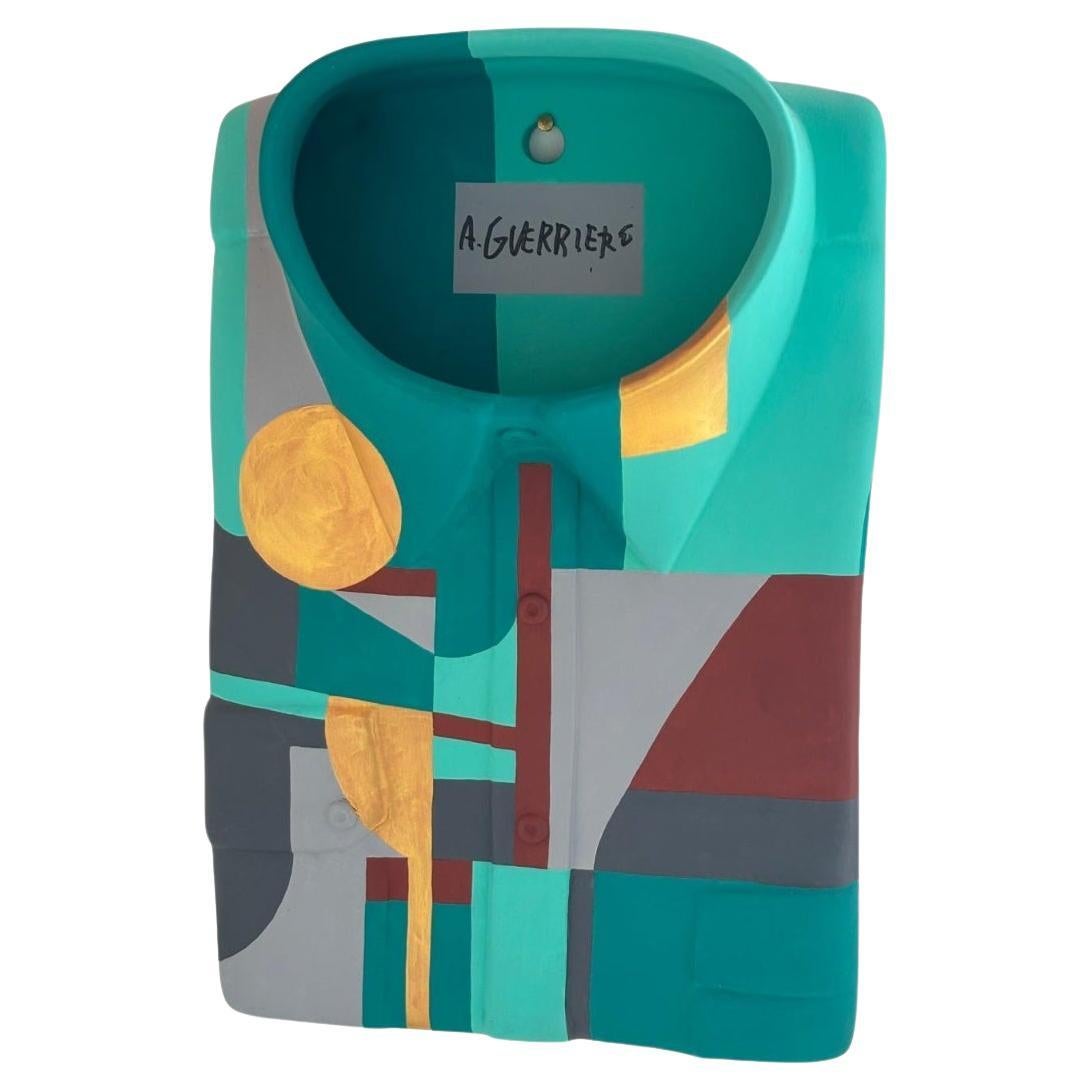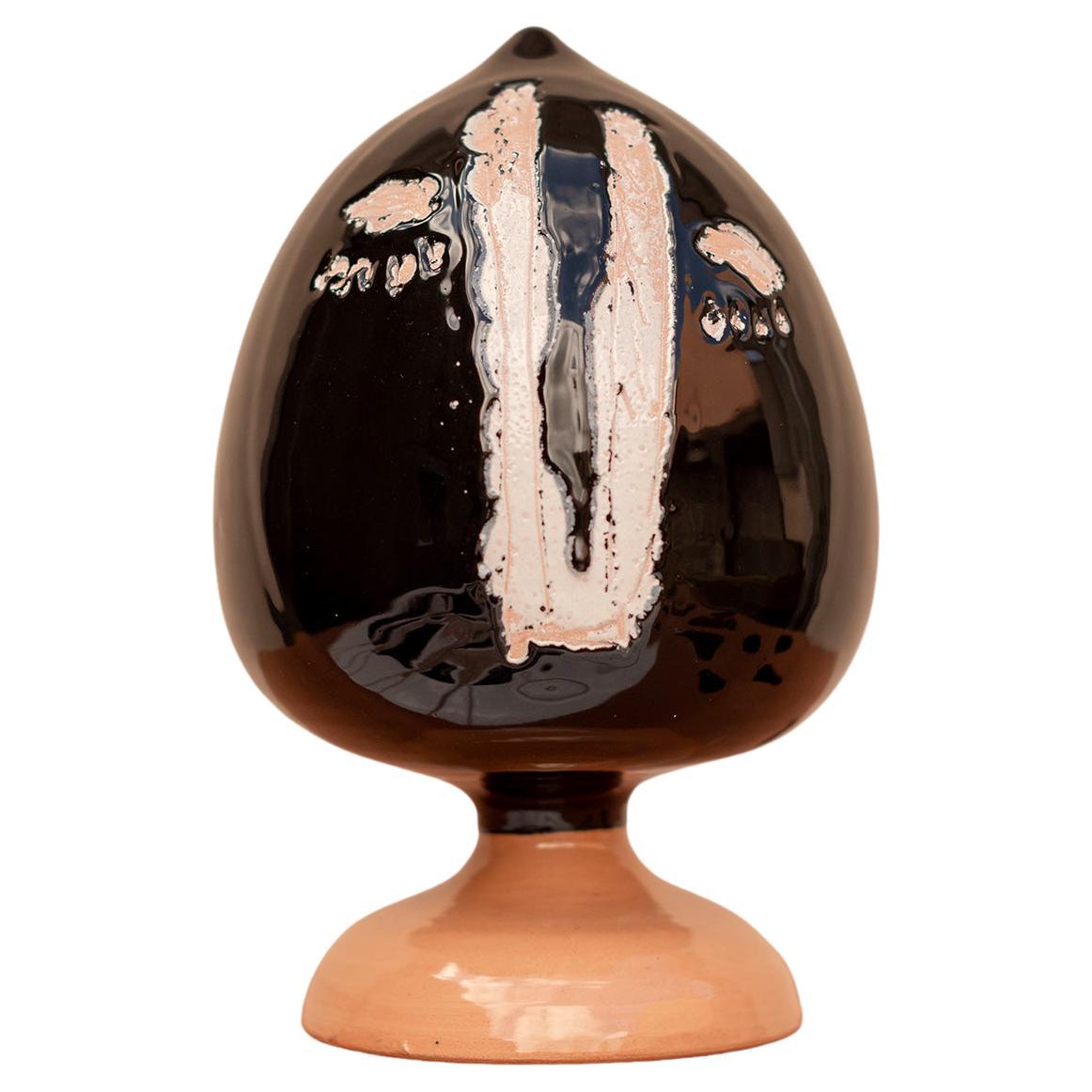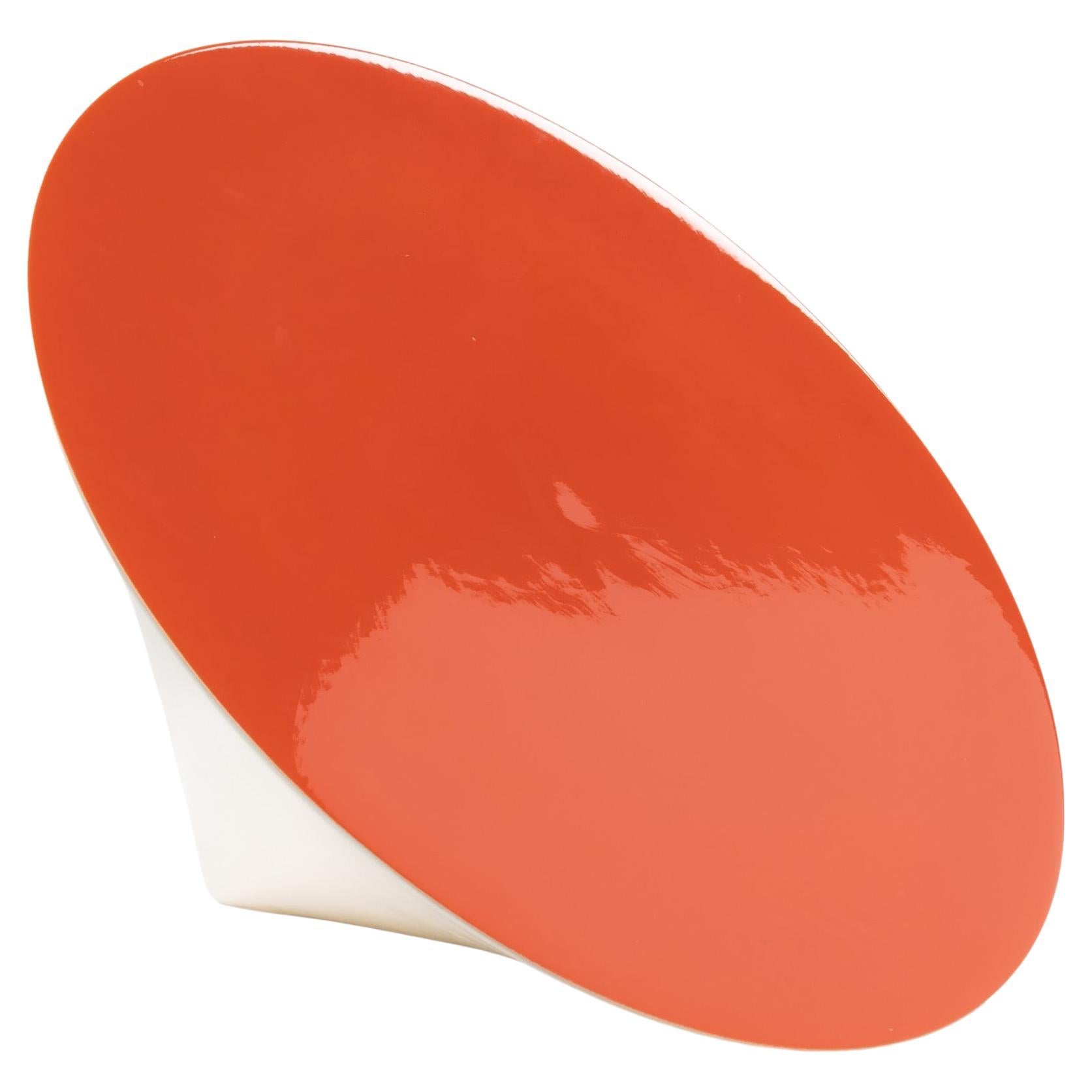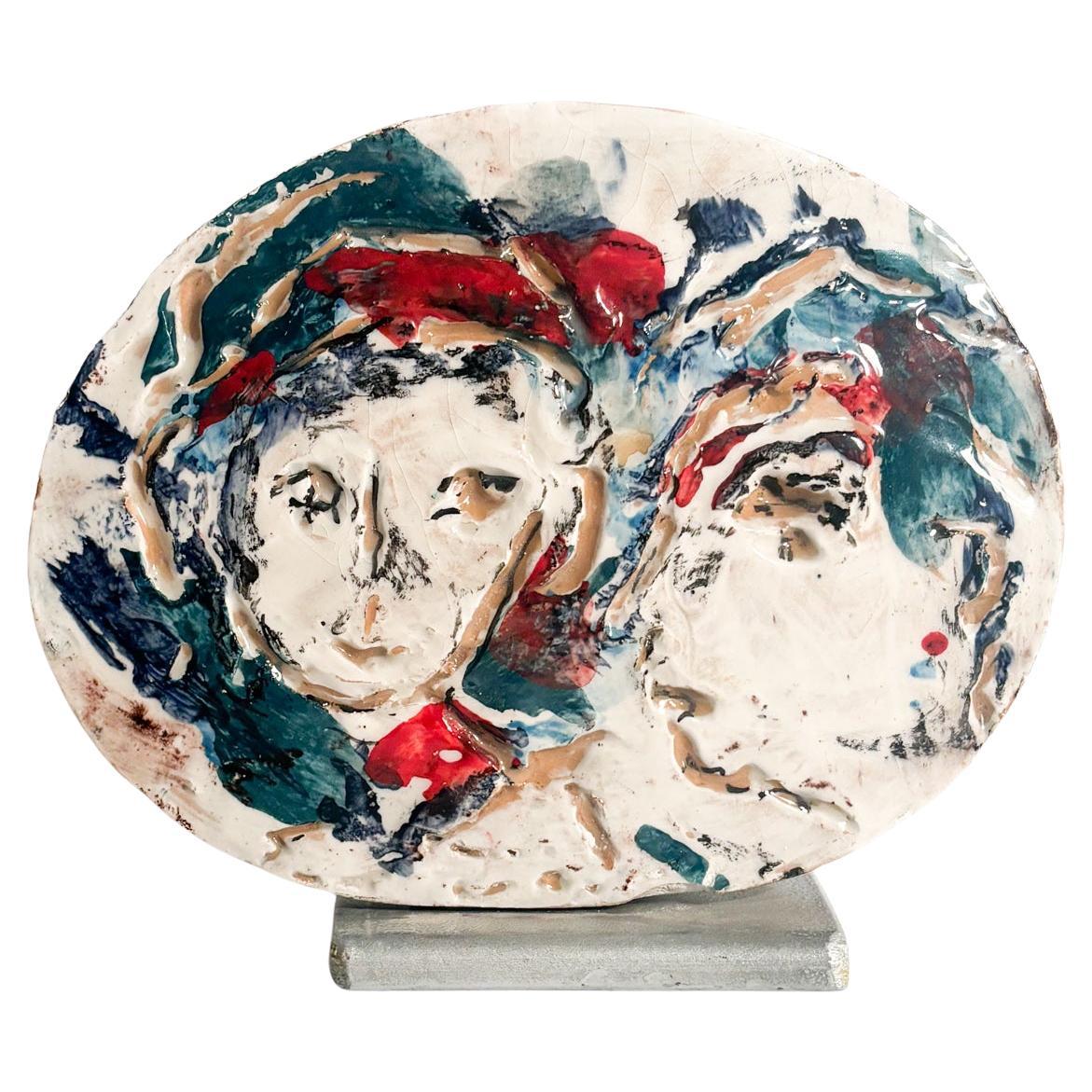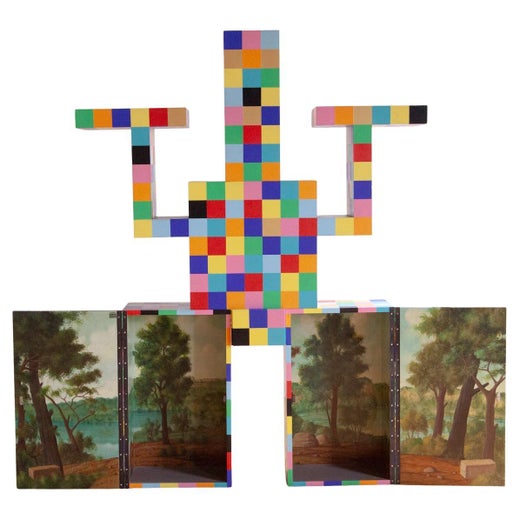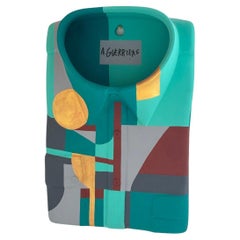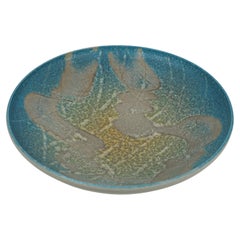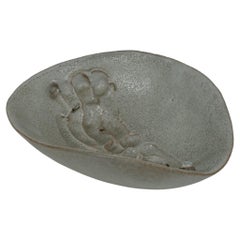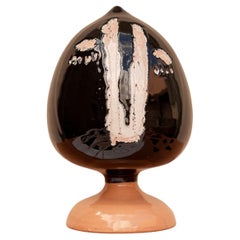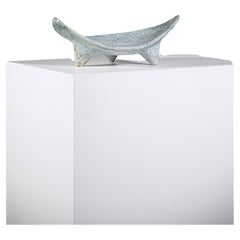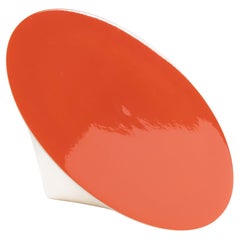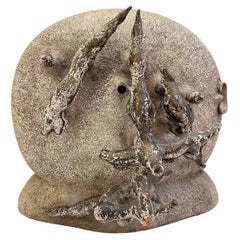Items Similar to Ceramic Sculpture Il cappello di Beuys by Alessandro Guerriero for Alchimia
Want more images or videos?
Request additional images or videos from the seller
1 of 8
Ceramic Sculpture Il cappello di Beuys by Alessandro Guerriero for Alchimia
$1,444.38
£1,050.77
€1,200
CA$1,971.16
A$2,195.06
CHF 1,142.41
MX$27,064.85
NOK 14,549.45
SEK 13,675.07
DKK 9,132.56
Shipping
Retrieving quote...The 1stDibs Promise:
Authenticity Guarantee,
Money-Back Guarantee,
24-Hour Cancellation
About the Item
Hand painted ceramic. Unique piece. Alchimia production.Signed.
Biography
In 1976 Alessandro and Adriana Guerriero established Alchimia, the first example of manufacturing designers in Milan. In 1978 and 1979 they presented the Bau haus and Bau haus II collections. Lamps, armchairs, chairs, tables, cabinets, and so on. Artists involved: Alessandro Mendini, Ettore Sottsass, Bruno and Giorgio Gregori, Michele De Lucchi, Andrea Branzi, UFO, Paola Navone, Daniela Puppa, Franco Raggi. The prevalent decorative material is laminated plastic. Alchimia’s culture, which is against the Italian design (Casabella magazine) changes the base of all previous design theories, resulting in a profound and radical change in the mindset of architects.
Visual Alphabets, Redesign, Trivial Design, Cosmetics and Sentimental Robot are the slogans underlying the exuberant and vast production of Alchimia city. In the theoretical manifesto of the group, Alessandro Mendini writes “Alchimia is not interested in disciplines because they are considered to be within their rules. Indeed, it is important to look into the existing large free spaces between them. Alchimia weighs the assumption that conception and confused production methods should coexist where craftsmanship, manufacturing, information technology, techniques and current and obsolete materials can get mixed up. “They are handcrafted objects, recycled, mass, improbable, provocative, Kitsch, all very theory-laden. It operates and experiences in many sectors: the Pensione Ideale (Franco Raggi), the Copertine di Domus (Occhiomagico), the Abito Sonoro and the performance of Persone Dipinte (Anna Gili), the Stilismo della Moda (Cinzia Ruggeri). The Neo-modern design, the new Italian design, is born.
In 1981, the Mobile Infinito, due to excess, cancelled both the types and project designers, thus entering into theatrical experiment with the Magazzini Criminali.
The emotional, psychological and anthropological activities expand to books, didactics, video (Metamorfosi) and sounds (Matia Bazar). Alessandro Guerriero is a founding member of Domus Academy in 1982 and in 1984, he began Nuova Alchimia under the brand Zabro. It is Aurelio Zanotta who supports this post-industrial collection.
In 1992, the romantic activity of Alchimia was terminated.
Today he continues his heroic adventure.
- Creator:Gruppo Alchimia (Manufacturer),Alessandro Guerriero (Designer)
- Dimensions:Height: 11.82 in (30 cm)Width: 11.82 in (30 cm)Depth: 5.91 in (15 cm)
- Style:Modern (Of the Period)
- Materials and Techniques:
- Place of Origin:
- Period:1990-1999
- Date of Manufacture:1995
- Condition:
- Seller Location:Milan, IT
- Reference Number:1stDibs: LU2140340921382
Alessandro Guerriero
Alessandro Guerriero is an Italian artist, architect and curator. In 1976, he founded Alchimia Studio - one of the most important groups devoted to the post-avant-garde in Italy. In 1982, Guerriero was awarded the “Compasso d'Oro” for his design research. Later, in 1987, he founded Domus Academy, a post-graduate industrial design and fashion design school. His best-known work is the new Benetton Museum, designed with Oliviero Toscani. He has recently designed a small city near Rome for the Alessi Family.
About the Seller
5.0
Gold Seller
Premium sellers maintaining a 4.3+ rating and 24-hour response times
Established in 2006
1stDibs seller since 2016
325 sales on 1stDibs
Typical response time: 1 hour
- ShippingRetrieving quote...Shipping from: Milan, Italy
- Return Policy
Authenticity Guarantee
In the unlikely event there’s an issue with an item’s authenticity, contact us within 1 year for a full refund. DetailsMoney-Back Guarantee
If your item is not as described, is damaged in transit, or does not arrive, contact us within 7 days for a full refund. Details24-Hour Cancellation
You have a 24-hour grace period in which to reconsider your purchase, with no questions asked.Vetted Professional Sellers
Our world-class sellers must adhere to strict standards for service and quality, maintaining the integrity of our listings.Price-Match Guarantee
If you find that a seller listed the same item for a lower price elsewhere, we’ll match it.Trusted Global Delivery
Our best-in-class carrier network provides specialized shipping options worldwide, including custom delivery.More From This Seller
View AllCeramic Sculpture by Alessandro Guerriero for Alchimia
By Gruppo Alchimia, Alessandro Guerriero
Located in Milan, Italy
Plaster folded shirt with geometric shapes hand painted in pastel and matte colors. Alchemy production. Handpainted. Unique piece.
Biography
In 1976 Alessandro and Adriana Guerriero established Alchimia, the first example of manufacturing designers in Milan. In 1978 and 1979 they presented the Bau haus and Bau haus II collections. Lamps, armchairs, chairs, tables, cabinets, and so on. Artists involved: Alessandro Mendini, Ettore Sottsass, Bruno and Giorgio Gregori, Michele De Lucchi, Andrea Branzi, UFO, Paola Navone, Daniela Puppa, Franco Raggi. The prevalent decorative material is laminated plastic. Alchimia’s culture, which is against the Italian design (Casabella magazine) changes the base of all previous design theories, resulting in a profound and radical change in the mindset of architects.
Visual Alphabets, Redesign, Trivial Design, Cosmetics and Sentimental Robot are the slogans underlying the exuberant and vast production of Alchimia city. In the theoretical manifesto of the group, Alessandro Mendini writes “Alchimia is not interested in disciplines because they are considered to be within their rules. Indeed, it is important to look into the existing large free spaces between them. Alchimia weighs the assumption that conception and confused production methods should coexist where craftsmanship, manufacturing, information technology, techniques and current and obsolete materials can get mixed up. “They are handcrafted objects, recycled, mass, improbable, provocative, Kitsch, all very theory-laden. It operates and experiences in many sectors: the Pensione Ideale (Franco Raggi), the Copertine di Domus (Occhiomagico), the Abito Sonoro and the performance of Persone Dipinte (Anna Gili), the Stilismo della Moda (Cinzia Ruggeri). The Neo-modern design, the new Italian design, is born.
In 1981, the Mobile Infinito, due to excess, cancelled both the types and project designers, thus entering into theatrical experiment with the Magazzini Criminali.
The emotional, psychological and anthropological activities expand to books, didactics, video (Metamorfosi) and sounds (Matia Bazar). Alessandro Guerriero is a founding member of Domus Academy in 1982 and in 1984, he began Nuova Alchimia...
Category
1990s Italian Modern Figurative Sculptures
Materials
Ceramic
Ceramic Sculpture Rupestre 02 by Gino Marotta for Superego Editions
By Superego Editions, Gino Marotta
Located in Milan, Italy
Ceramic Sculpture designed by Gino Marotta for Superego Editions. Signed. Prototype.
Biography
Gino Marotta (Campobasso, 1935 – Rome, 2012) was an italian painter and sculptor. Afte...
Category
Early 2000s Italian Modern Vases
Materials
Ceramic
Ceramic Centerpiece by Carlo Zauli from Faenza, Italy 1970
By Carlo Zauli
Located in Milan, Italy
Ceramic (Grés) centerpiece designed and produced by Carlo Zauli in 1970.
Unique piece. Signed.
Biography:
Carlo Zauli (Faenza, 1926-2002) is one of the great names in post-war ...
Category
Vintage 1970s Italian Modern Abstract Sculptures
Materials
Ceramic
Ceramic Centerpiece by Carlo Zauli from Faenza, Italy 1970
By Carlo Zauli
Located in Milan, Italy
Ceramic (Grés) centerpiece designed and produced by Carlo Zauli in 1970.
Unique piece. Signed.
Biography:
Carlo Zauli (Faenza, 1926-2002) is one of the great names in post-war Italian sculpture.
Like other masters of previous generations, from Martini to Fontana and Leoncillo, his technical training was in the field of ceramic art. Zauli moved away from its formal principles in the sixties, however, when his work moved towards a complex form of sculptural research of great expressive richness. The shift from informal territories towards a reasoning about geometrical forms as rhetorical structures brought him into the heart of the sculptural debate of those years. The solo exhibition at the Montenapoleone Gallery of Milan in 1957 fitted in perfectly with other works that were part of a trend towards an integration of the arts (frieze for the palace in Baghdad, 1958; frieze for the government printing office...
Category
Vintage 1970s Italian Modern Abstract Sculptures
Materials
Ceramic
Ceramic Sculpture Bagnante Model by Ugo La Pietra for Superego Editions, Italy
By Ugo La Pietra, Superego Editions
Located in Milan, Italy
Great female bust ceramic-molded casting, Bagnante, "Monumento alla balnearita'" collection, designed by Ugo La Pietra and produced by Superego Editions. Limited edition of 29 pieces...
Category
2010s Italian Modern Busts
Materials
Ceramic
Italian Ceramic Sculpture Model Pila by Andrea Branzi for Superego Editions
By Andrea Branzi, Superego Editions
Located in Milan, Italy
Earthenware. Manufactured by Superego Editions, Italy. Underside with transfer print ‘A. Branzi/Superego/Editions’. 2007.
Biography
Superego editions was born in 2006, performing...
Category
Early 2000s Italian Modern Abstract Sculptures
Materials
Ceramic
You May Also Like
21st Century Apulian Ceramic Pumo serie "Primitive" Kiasmo by Vincenzo D'Alba
By Vincenzo D'Alba
Located in Ruffano, IT
The "Primitive' pumo is therefore a ceramic handmade artefact, where the materiality of the enamels embodies the sense of the unexpected and the uniqueness of the artwork.
Category
2010s Italian Modern Figurative Sculptures
Materials
Ceramic
A Sculptural Ceramic Bowls by Les 2 Potiers France 1950s
By Les 2 Potiers
Located in HYÈRES, FR
A free form bowls by Les 2 Potiers in 1950s
Auvergne, France
Signed under the piece.
Report : The enamel a little be used in the center of the bowls.
Category
Vintage 1950s French Decorative Bowls
Materials
Ceramic
Enameled Ceramic Sculpture by Antonino Spoto, Belgium
By Antonino Spoto
Located in Uccle, BE
Sculpture of conical shape in enameled ceramic, the conical surface enameled in matt white color, the "base" enameled in bright orange color.
Produced in 2013.
Considered one of the beautiful surprises of Belgian ceramics...
Category
2010s Belgian Mid-Century Modern Abstract Sculptures
Materials
Ceramic
Terracotta Sculpture by Yves Rhayé, Belgium, 1985
By Yves Rhayé
Located in Brussels, BE
Terracotta Sculpture by Yves Rhayé, Belgium, 1985
Category
Vintage 1980s Belgian Mid-Century Modern Abstract Sculptures
Materials
Terracotta
Painted Ceramic Plate by Ernesto Treccani 1970s
By Ernesto Treccani
Located in Milano, MI
Hand-painted ceramic plate made by Ernesto Treccani in the 1970s.
Ø cm 20 h cm 15,5
Ernesto Treccani was an Italian painter, engraver, and writer, a prominent figure in the Italian...
Category
Vintage 1970s Italian Mid-Century Modern Abstract Sculptures
Materials
Ceramic
1980s Bruno Contenotte Italian Pottery Abstract Art Ceramic Sculpture
By Bruno Contenotte
Located in Brescia, IT
Silver, gold and black ceramic.
1983, Bruno Contenotte
Perfect condition
Measure: H 24 cm.
Category
Vintage 1980s Italian Mid-Century Modern Abstract Sculptures
Materials
Pottery
More Ways To Browse
Ceramic Lamp Base Sculpture
Italian Plastic Laminate
Kitsch Lamps
Michele De Lucchi First
Industrial Robot
Terminator 1984
Ufo Chair
Michele De Lucchi First Chair
Vintage Kitsch Lamp
Zanotta Zabro
Vintage Robot Lamp
Paola Navone Ceramic
Manifesto Sottsass
Robot Cabinet
Alchimia Redesign
Alessandro Mendini Signed Zabro
Cinzia Ruggeri
French Mirror Ribbon
